In the year 10 B.C. Emperor Augustus commissioned the mathematician and architect Novius Facundus to design and build a sundial in Rome, the Horologium Augusti , as a commemoration of the Roman domination of Egypt and Augustus himself born to bring peace to the world .
Thus, its installation was projected in the Campo de Marte integrated with the Ara Pacis (Altar of Peace) that was being built from the year 13 B.C. and aligned with the Via Flaminia.
To use as a gnomon (the element that casts the shadow) Augustus had a 30-meter-high red granite obelisk brought from Heliopolis in Egypt, which had been erected by Pharaoh Psammetichus II between 595 and 589 BC.
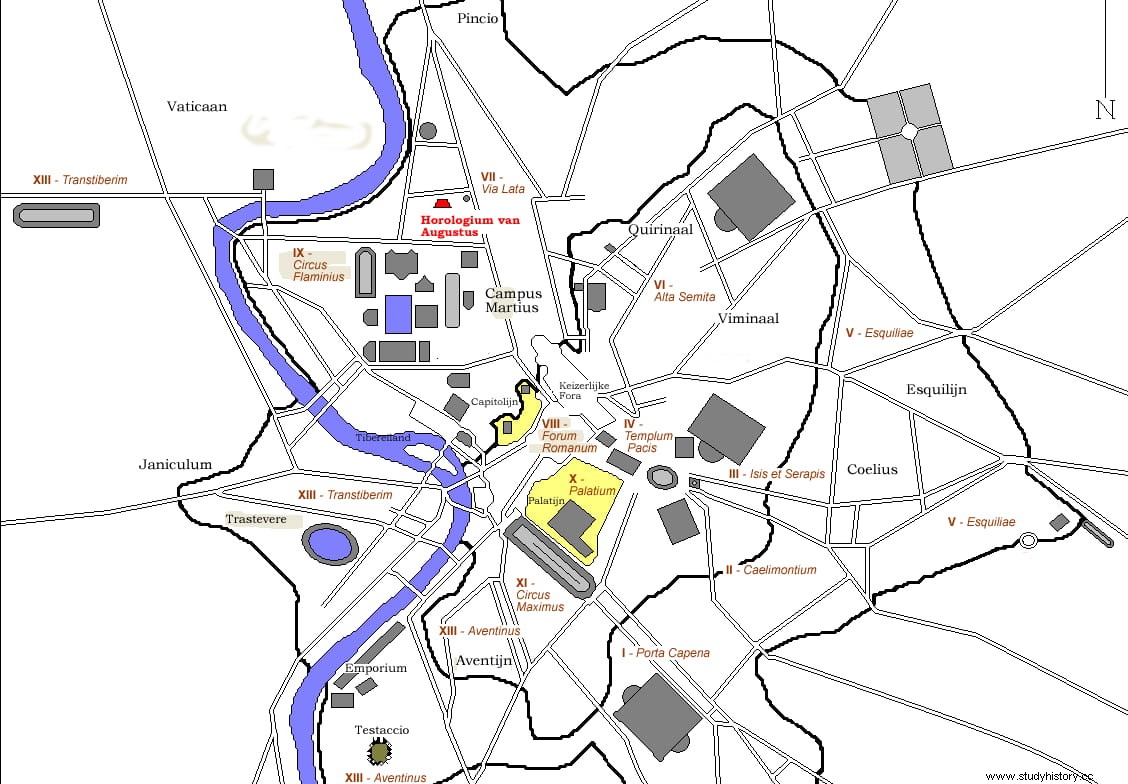
The obelisk cast its shadow on a 160 by 75 meter quadrangular marble pavement, composed of travertine slabs, with inlaid gilt bronze lines and letters indicating the months and seasons. It was placed in such a way that the shadow fell on the center of the Ara Pacis on September 23, the autumnal equinox and the birthday of Augustus himself. The clock was completed in the year 9 B.C. and it was dedicated to the Sun. Pliny the Elder describes it when he talks about the obelisks of Rome:
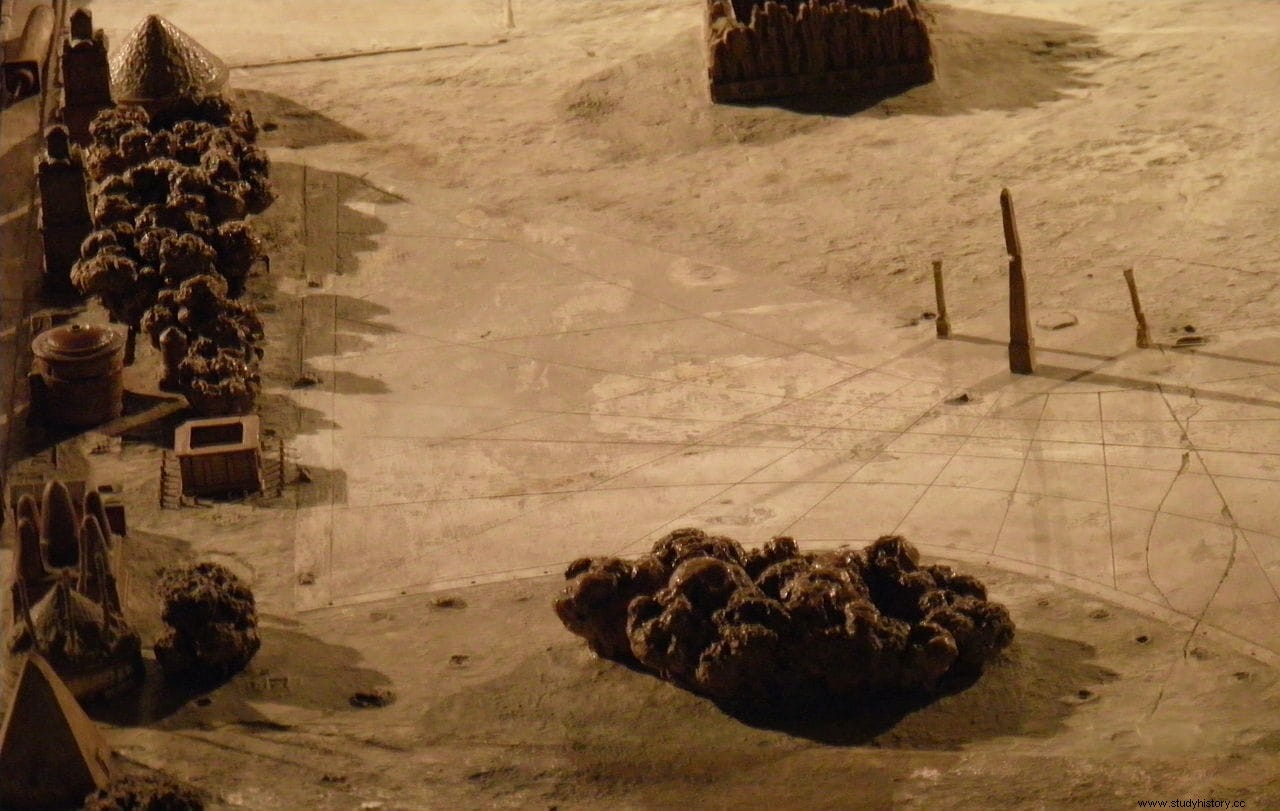
The area covered by the Horologium Augusti in the Field of Mars it corresponds to a circle that encompasses the current Piazza di San Lorenzo in Lucina and the Piazza del Parlement. The obelisk, which stood in the center of this circle, was topped with a bronze orb. Depending on the position of the sun, the shadow of the obelisk was projected on one side or the other of the marble dial, indicating the day of the month according to the length of the shadow at noon.
According to Pliny, the orb was what gave definition to the shadow, something that Novius understood by observing the shadow cast by the human head.
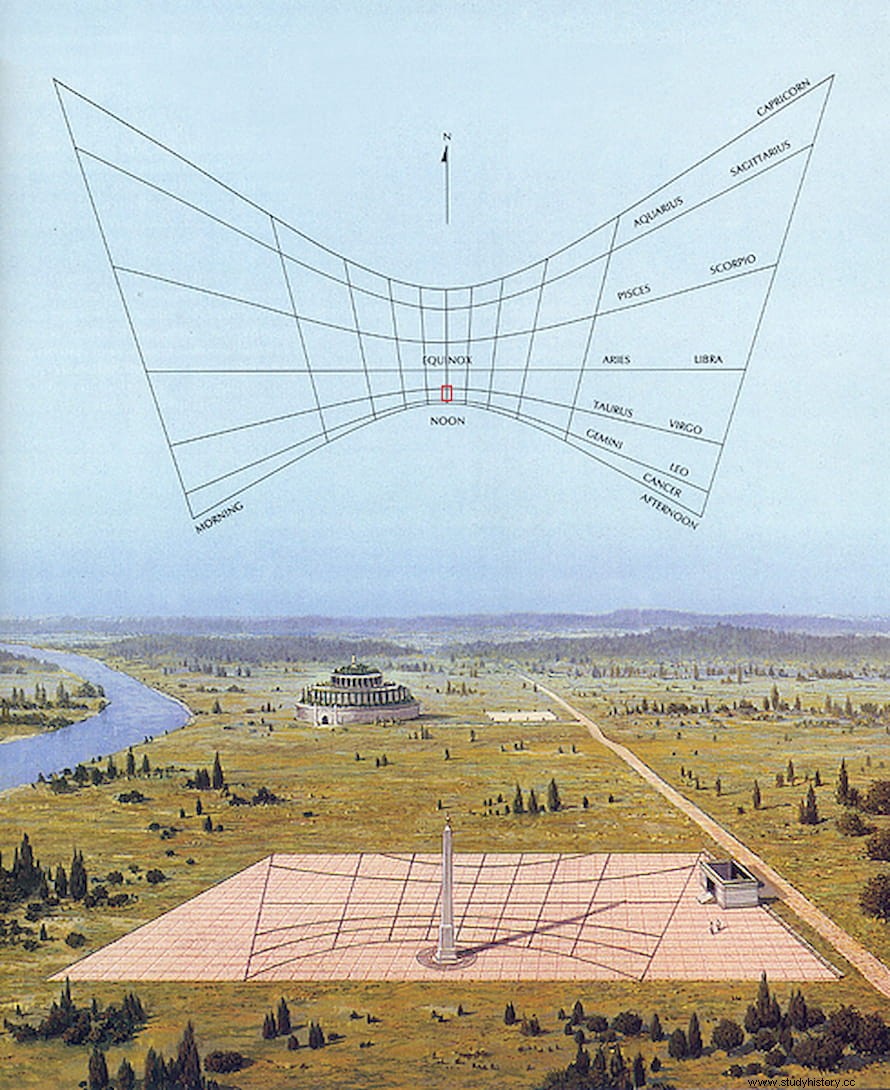
But by the time Pliny was writing, around the year 70 A.D., the clock had not been working correctly for several years, for which he gives different explanations. The truth is that the excavations found that the floor of the Champ de Mars had sunk, probably due to floods or earthquakes.
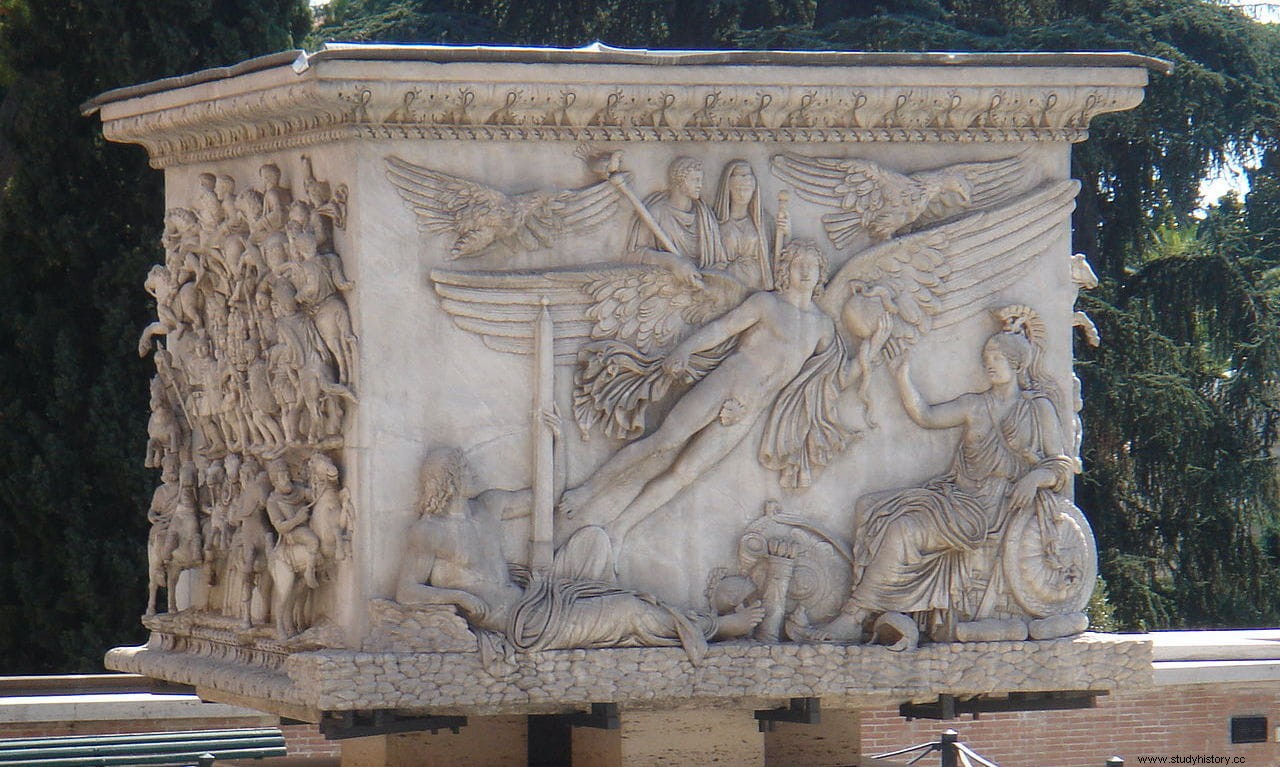
To compensate for the subsidence of the ground and return the clock to its accuracy, Domitian raised the level more than a meter and a half, using the pavement and the original letters of the Horologium .
Some researchers believe that it was not a sundial but a solar meridian (which does not mark time but only noon or meridianus ) designed to indicate the progress of the year as the sun moved through the zodiac, from solstice to solstice. Instead of the travertine pavement, there would have only been a longitudinal line that would delimit the greatest extension of the shadow at noon of the winter solstice.
At the summer solstice, the longest day of the year, the shadow would have moved completely along the meridian line. Then, as the sun descends on the horizon, its midday shadow would begin to lengthen and move up the meridian until it can grow no longer, thus marking the winter solstice, the shortest day of the year.
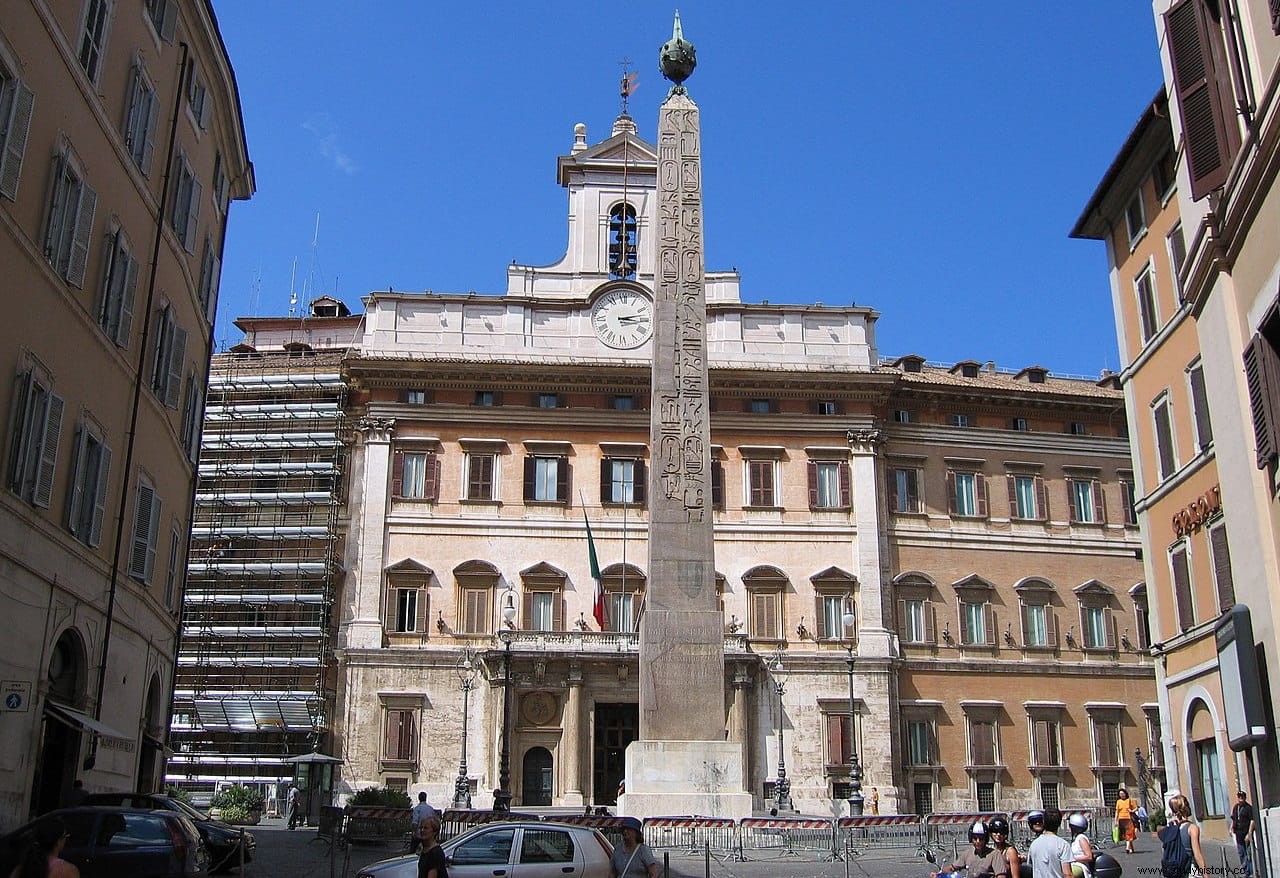
The obelisk stood until the 9th or 10th century when, probably during the earthquake of 849 AD. or perhaps because of the looting of the year 1084 A.D., it fell to the ground and broke into five pieces, gradually being covered by sediment.
It was found in 1512 but not excavated until 1748. The remains were recovered and the obelisk rebuilt (with sections of red granite taken from the badly damaged Antonine Column) and re-erected by Pius VI in 1792 in Piazza Montecitorio of Rome, where we can contemplate it today. It is 21.79 meters high, reaching 33.97 if the base and the orb are added.
In 1980 Edmund Buchner, a historian who was president of the German Archaeological Institute, found the remains of a small section of the pavement with the lines and Greek letters of the months of the Horologium Augusti etched into the travertine slabs under the blocks of houses between Parliament Square and San Lorenzo Square in Lucina, 8 meters deep. Just as Pliny had described. Another fragment of the pavement is believed to be contained in the mosaic, still visible, in the foundations of the church of San Lorenzo in Lucina.
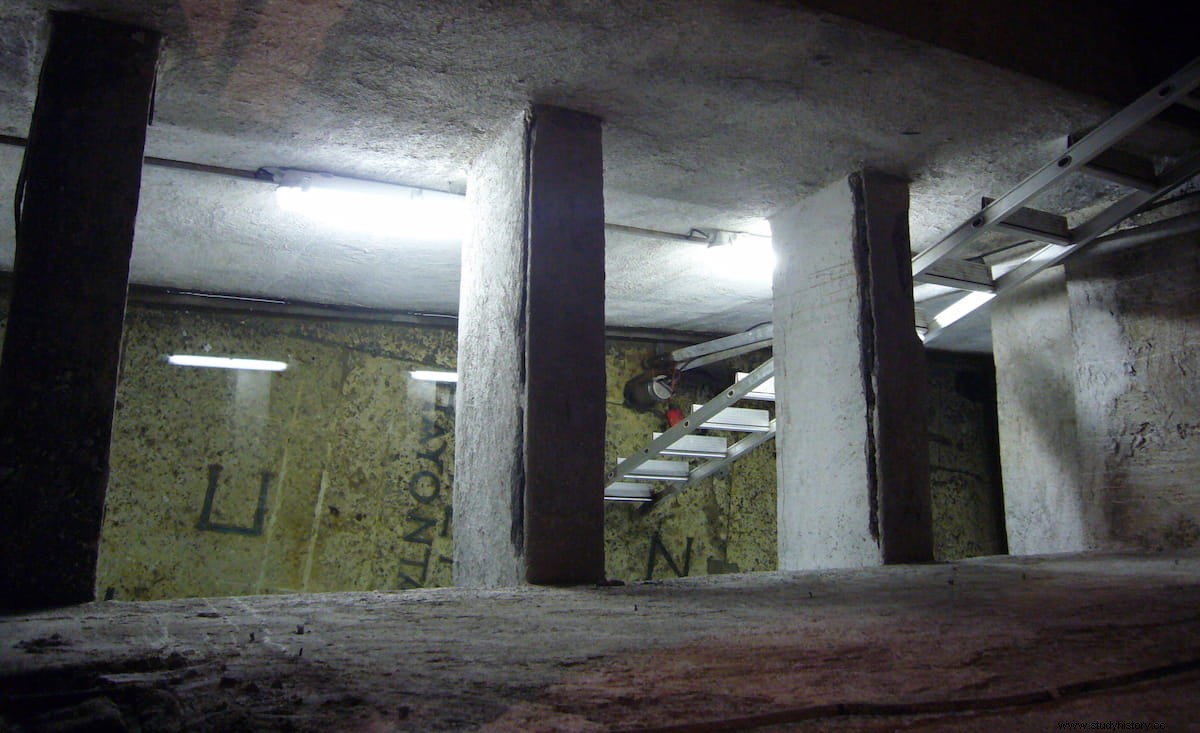
The reconstruction of the Horologium proposed by Buchner, and his theory that the shadow of the obelisk fell on the Ara Pacis on Augustus's birthday, have been questioned by some researchers, while others argue that both monuments were intentionally aligned and located to spread the same message inscribed on two sides of the obelisk:that Augustus was a devout worshiper of the sun god, the one who leads Rome to victory and brings peace and prosperity through his earthly representative, the emperor.
In the reform of the Montecitorio square inaugurated on June 7, 1998, a new meridian was drawn on the pavement in honor of the Horologium Augusti , although the obelisk's shadow no longer marks the months or seasons.
